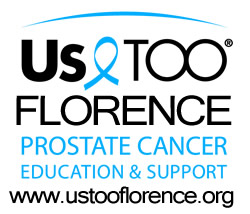|
||||||||
| Home | News You Can Use |
About Us TOO Florence |
Personal Journeys | Slideshows | Contact Us | |||
| Each man's Journey is listed under his BASIC treatment. When you click on one of the names to read a particular Journey, you may see one or more different treatments in bold lettering immediately above the Journey text. You will see (Recurrence) if they are due to a recurrence. Otherwise, they will be treatments used in conjunction with the basic treatment, i.e. Lupron with External Beam Radiation or External Beam Radiation with HDRT/Brachytherapy, etc. | |
Active Surveillance Alternative (Natural) Therapy Cryoablation - Freezing Hormone Therapy Radiation - Brachytherapy Radiation - External Beam Radiation - HDRT Surgery - Open Surgery - Robotic |
External Beam (Recurrence) I've been a cancer survivor for almost 12 years. Sometimes it seems cancer has always been part of my life, kind of like a member of the family or an old friend. But this is one friend no one wants. I certainly didn't. In the summer of 1997 my doctor suggested, since I was then 52 years old, that I include a PSA test as part of my annual physical exam. I remember the cold shiver that raced down my spine when he called one afternoon to tell me the numbers were higher than they should be. A regimen of antibiotics was followed with a re-test and the results were not good. The PSA had actually risen in just a few weeks. A biopsy was scheduled and on October 2, I learned the results were positive which means not good at all. I had prostate cancer. The next weeks were filled with gathering lots of information in an attempt to figure out what would be the best method for fighting the disease. The most frustrating thing was there was no clear cut answer as to what to do about it. Options included everything from watchful waiting (no immediate action) to several forms of radiation to a surgery called radical prostatectomy. Every option had a down side and none could promise a complete "cure." I decided on surgery because that would get "it" out of my body. Also, if I had a recurrence following surgery, I could fall back on radiation therapy (little did I suspect that I would actually need to go there). And, finally, if radiation failed, hormone therapy would be available. Perhaps as important, once out of my body, pathologists could evaluate the tumor and provide a clearer picture of what I was dealing with. The surgery, completed the day after Thanksgiving in 1997, went very smoothly and my wife, Sandy, and I eagerly waited for the post surgery report hoping for confirmation that the cancer was not aggressive and that the entire tumor had been removed. The lab report showed my cancer was moderately aggressive with a Gleason score of 6 (3+3), but even more disturbing, the surgical margins were positive. This means the pathologist found cancer cells present on the outside of the prostate meaning the cancer could have spread to other parts of my body. We were so discouraged, but placed hope that maybe my body would naturally take care of any remaining cancer cells. There could only be a few, right? The months and years went by and the follow-up PSA test results were what we hoped for, 0.0, no indication of cancer. Then, in 2003 the numbers started to creep up and two years later the creep turned into a trot. After hovering near 0.0 for years my PSA jumped to .08 in just two years. Even though those numbers were low, they indicated something was going on and it wasn't good. The rate at which the PSA increases (PSA Velocity) is significant because fast-rising PSA suggests an aggressive form of the disease. About this time I started to attend Florence Man to Man prostate cancer support group meetings where I encountered so many other survivors who offered information , support and most important , hope. Of course, it didn't hurt that urologist Dr. Bryan Mehlhaff also attended those meetings to provide information and answer questions. It was also at this time I learned about Image Guided Radiation Therapy and Oregon Urology Institute's new Radiation Center in Springfield. At the suggestion of Dr. Mehlhaff, my wife and I visited Dr. Barry Blyton, radiation oncologist, who told us about advances in radiation therapy techniques and equipment that were proving to be very effective in controlling the disease. We also learned higher rates of success have been achieved with patients treated early in the progression of the disease. I started therapy (40 consecutive daily treatments - thank you Friends of Florence for the bus service!) as soon as possible and the results have been wonderful. My PSA is almost negligible, 0.01, and I have suffered no ill effects from the radiation treatment. In fact, just two days before I completed the treatments, I participated in the 2008 Rhody Run and recorded my fasted time ever in a 5K race! In April, 2009, the American Urological Association (AUA) recommended that physicians start offering the PSA test to men at age 40. Had I started my testing 10 to 12 years earlier as per this new recommendation, my cancer would likely have been detected earlier and my surgery would have ended it all right there. I would have appreciated that! |
| www.ustooflorence.org Copyright © 2010 - 2025 | |

